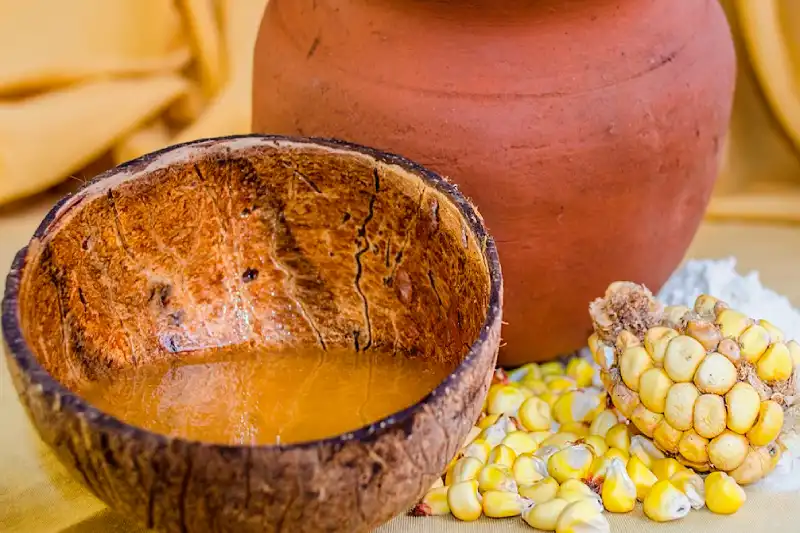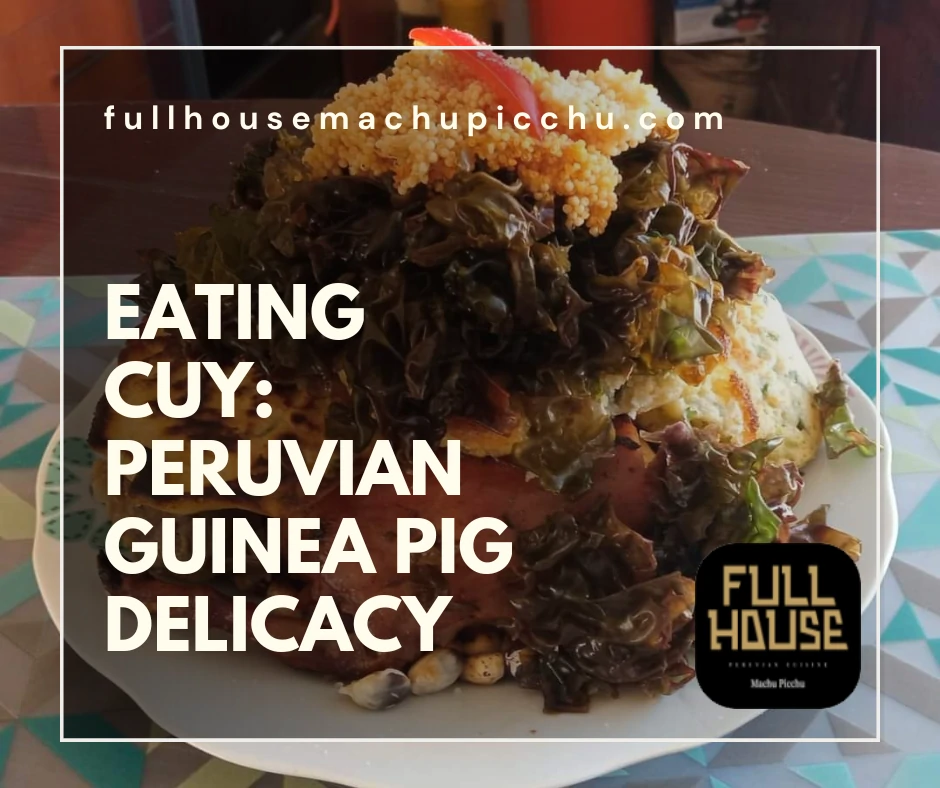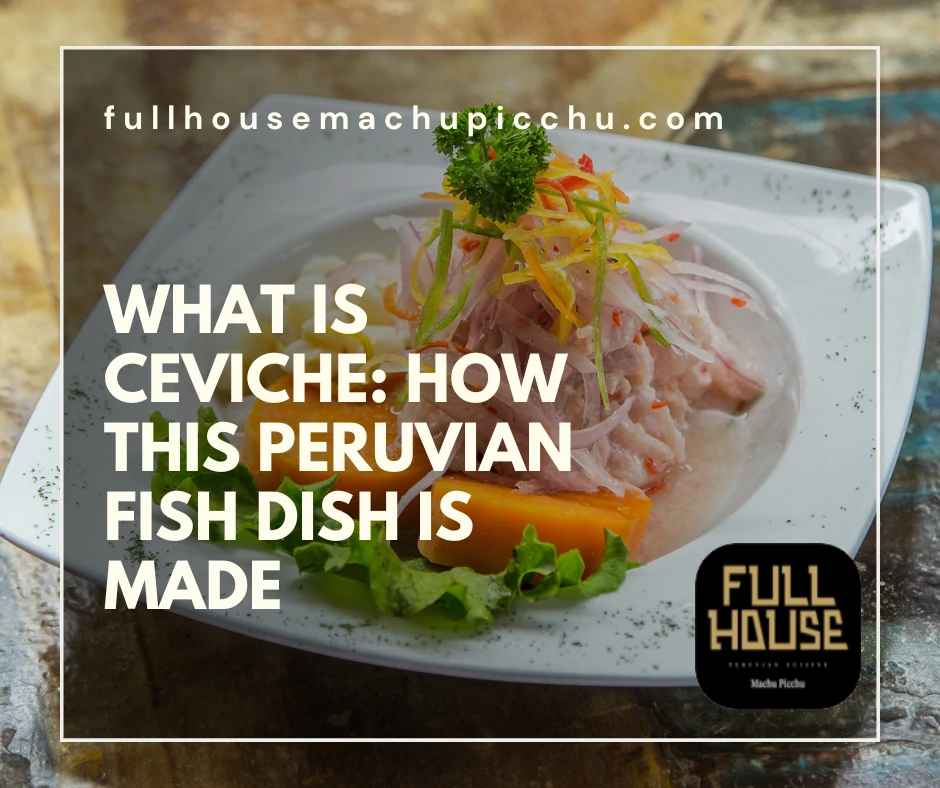Embark on a vibrant journey through Peru’s beverages landscape. Discover the fusion of flavors in each sip. From Pisco to passion fruit, Peru’s drinks enchant.
Explore the heart of Peruvian culture through its unique beverages. Each drink tells a story of tradition and innovation. Delight in the unique tastes of Peru.
Join us as we tour the country’s beloved libations. Experience the warmth of Pisco, Peru’s prized spirit. Relish the refreshing zest of passion fruit concoctions.
This guide promises an unforgettable adventure. Savor the diversity of Peru’s beverages. Immerse yourself in a world of new options. Some Of them are waiting for you on our menu.
Unveiling the Secrets of Pisco: Peru’s Signature Spirit
Pisco, a spirit steeped in history, defines the essence of Peru’s beverages. This grape-based brandy captivates connoisseurs and novices alike. Its production, deeply rooted in Peruvian tradition, offers a glimpse into the country’s rich cultural heritage.
Distillers use specific grape varieties to craft Pisco. This variety is different from the one used to make wine. They follow a meticulous distillation process. The result? A clear, potent spirit that embodies the soul of Peru.
Pisco serves as the cornerstone of Peru’s cocktail culture. The most famous concoction, the Pisco Sour, combines Pisco with lime, syrup, egg white, and bitters. This drink has gained international fame, showcasing Peru’s beverages on the world stage.
The Art of Pisco Making
The art of making Pisco begins in the vineyards of Peru’s coastal valleys. Here, the climate and soil create ideal conditions for grape cultivation. Harvesters pick the grapes by hand, ensuring only the best quality for Pisco production.
After fermentation, the grape juice transforms into a must. Distillers then distill this must in copper stills. They take great care to preserve the spirit’s purity and flavor.
The aging process of Pisco is unique. Producers store it in vessels that do not alter its characteristics. This method maintains the spirit’s clarity and intensity.
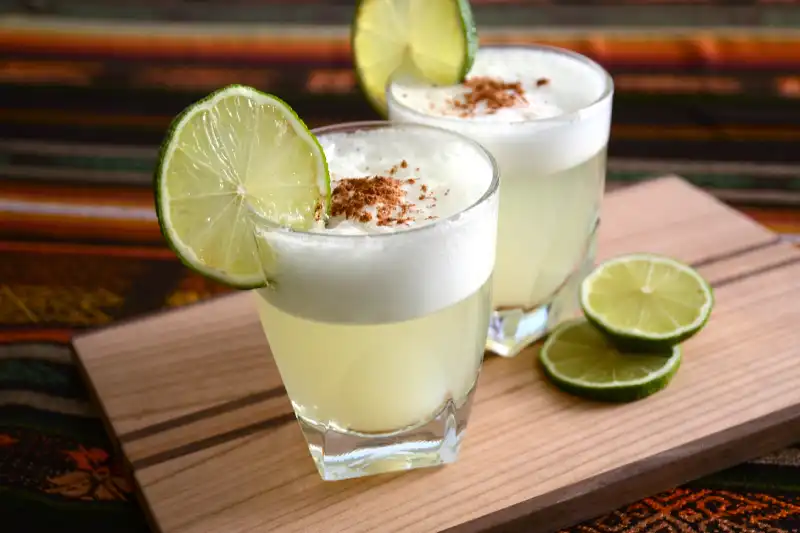
Varieties of Pisco
Pisco comes in several varieties, each with its own distinct profile. Pure Pisco, made from a single grape variety, offers a clear, straightforward taste. Aromatic Pisco, derived from muscat grapes, exudes floral and fruity notes.
Blended Pisco, or “Acholado,” mixes different grapes. This variety provides a complex, layered flavor experience. Finally, aged Pisco, though less common, presents a smoother, more refined taste.
Pisco in Peruvian Culture
Pisco is more than just a drink in Peru; it’s a symbol of national pride. Families and friends gather to enjoy Pisco-based cocktails during celebrations. These moments highlight the spirit’s role in bringing people together.
Peru also celebrates Pisco with a national holiday. On this day, Peruvians honor the spirit’s history and significance. Festivals, tastings, and competitions take place, drawing both locals and tourists.
Pairing Pisco with Food
Pisco pairs wonderfully with Peruvian cuisine. Its versatility complements the flavors of dishes from ceviche to lomo saltado. The spirit’s crispness cuts through the richness of the food, creating a harmonious balance.
Chefs and mixologists are experimenting with Pisco in culinary creations. They infuse it into desserts and sauces, adding a Peruvian twist to their recipes. This innovation opens new avenues for enjoying Peru’s beverages.
Savoring Pisco: Tips for Enjoyment
To fully appreciate Pisco, one must savor it properly. Start by tasting it neat, at room temperature. This method allows you to experience its full range of flavors.
When mixing Pisco cocktails, balance is key. The right proportions of ingredients highlight the spirit’s characteristics. Classic recipes, like the Pisco Sour, serve as a great starting point.
Exploring the world of Pisco offers insight into Peru’s heritage and its celebrated beverages. This journey reveals the dedication behind each bottle. It showcases the spirit’s versatility and its place in the heart of Peruvian culture.
The Refreshing Allure of Simple Drinks: For Everyone
In the heart of every culture lies a unique beverage story. Among these, Chicha Morada and passion fruit drinks stand out. These non-alcoholic offerings provide a glimpse into the vibrant world of Peruvian drinks.
Chicha Morada, a beloved traditional drink, originates from purple corn. This ingredient, deeply rooted in Peruvian culture, offers more than just a vivid hue. It brings a rich, antioxidant-packed flavor to the table.
To prepare Chicha Morada, one simmers purple corn with pineapple, cinnamon, and cloves. Lime juice and sugar accompany the final product. This concoction results in a refreshing, slightly sweet fruity drink.
Passion Fruit Drink: A Tropical Delight
Another staple of Peru’s non-alcoholic beverage scene is the passion fruit drink. Known locally as “maracuyá,” its tangy flavor captivates anyone who tries it. This drink combines passion fruit pulp with water and sugar, often enhanced with a splash of lime juice.
The passion fruit drink serves as a testament to Peru’s rich biodiversity. It showcases the country’s ability to produce vibrant, flavorful fruits. This beverage, like Chicha Morada, plays a significant role in Peruvian cuisine and gatherings.
A Sip of Tradition and Modernity
These drinks do more than quench thirst; they connect people to Peruvian culture. Chicha Morada, for instance, has roots that trace back to ancient civilizations. It represents a continuity of tradition, from the Inca empire to modern-day Peru.
Similarly, the passion fruit drink reflects Peru’s tropical
abundance. It highlights the adaptability of Peruvian cuisine to incorporate diverse flavors. Both beverages exemplify the simplicity and richness of Peru’s beverages.
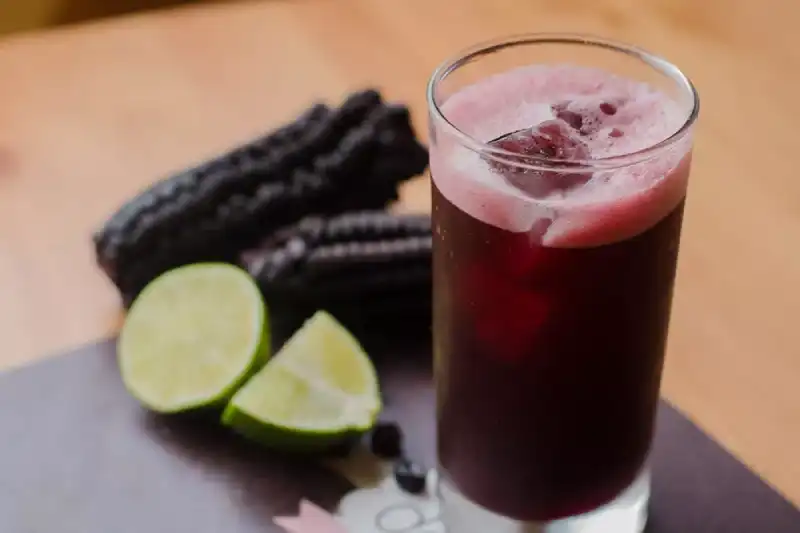
Integrating with Peruvian Cuisine
The versatility of Chicha Morada and passion fruit drinks extends to food pairings. They complement a wide range of Peruvian dishes. From ceviche to lomo saltado, these drinks add a refreshing balance to the flavorsome meals.
These beverages also inspire innovation in Peru’s culinary scene. Chefs incorporate Chicha Morada into desserts, and passion fruit juice becomes a base for sauces. This creativity showcases the integral role of these drinks in Peruvian cuisine.
The Global Appeal of Simple, Refreshing Drinks
As the world becomes more interconnected, Peru’s beverages gain international recognition. Chicha Morada and passion fruit drink have found fans far beyond Peru’s borders. This global appeal underscores the universal desire for simple, refreshing drinks.
These beverages introduce international palates to the depth of Peruvian culture. They serve as ambassadors of Peru’s rich culinary tradition. This global reach amplifies the importance of Chicha Morada and passion fruit drink.
Exploring Peru’s Diverse Drink Culture: Beyond the Classics
Peru’s beverages extend far beyond the well-known Pisco Sour and Chicha Morada. The country’s drink culture is a vibrant tapestry, reflecting its rich history, biodiversity, and culinary innovation. From the Andes to the Amazon, every region offers something unique.
Chicha de Jora: A Taste of History
Chicha de Jora is another cornerstone of Peru’s beverages, deeply rooted in the country’s traditions. This fermented corn beer dates back to the Inca Empire, serving both ceremonial and daily purposes. Its preparation involves fermenting germinated maize. The fermentation offers a slightly sour and fizzy profile.
This ancient beverage connects modern-day Peruvians with their ancestral heritage. It’s not just a drink; it’s a cultural artifact, consumed widely during festivals and community gatherings. Chicha de Jora embodies the communal spirit of Peruvian culture, inviting everyone to share in its timeless taste.
Mate de Coca: The Andean Elixir
In the high altitudes of the Andes, Mate de Coca serves as both a remedy and a ritual. Made from coca leaves, this herbal tea is a testament to the adaptability and wisdom of Andean cultures. It offers relief from altitude sickness, fatigue, and hunger, making it an indispensable part of life in the mountains.
The consumption of Mate de Coca highlights the respect for natural resources prevalent in Peruvian culture. It’s a bridge between the ancient and the modern, where traditional knowledge meets contemporary needs. This drink is not just about the physical benefits; it’s a sip of Andean heritage.
Inca Kola: The Golden Cola
Beyond its role as a culinary companion, Inca Kola represents the fusion of Peruvian innovation with global tastes. Created in the early 20th century, it became the most iconic national soft drink. This soda became a modern classic into Peru’s beverages.
Today, Inca Kola stands shoulder to shoulder with international soda brands, proudly retaining its unique identity.
The success of Inca Kola underscores Peru’s ability to create flavors that resonate on a global scale. It’s a story of local ingenuity becoming a national emblem. This golden soda is more than a drink; it’s a piece of Peru’s cultural fabric, enjoyed by all ages.
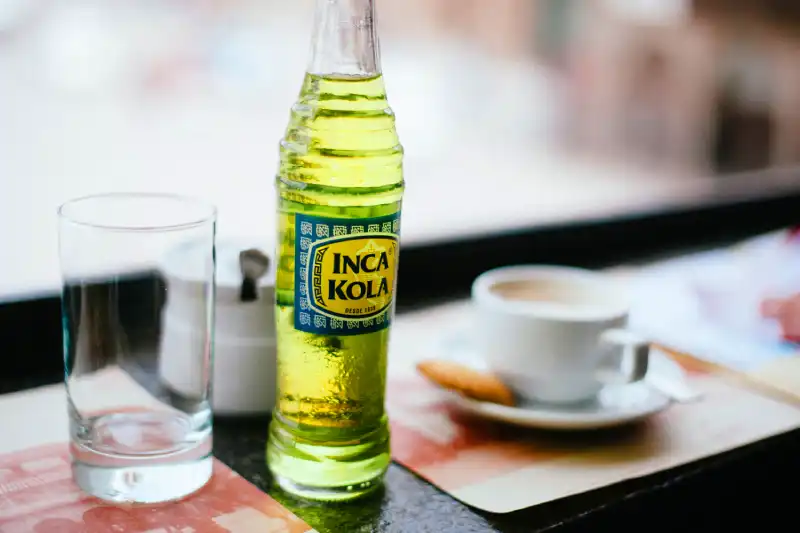
Peru’s Tea Culture: Herbal Infusions
Peru’s diverse flora lends itself to a rich tea culture, beyond Mate de Coca. Herbal infusions like muña, used for digestive health. Another is cedrón, known for its calming properties. These are staples in Peruvian households.
These teas reflect the Peruvian approach to wellness, emphasizing natural remedies and the healing power of plants. Peru’s tea culture is a soothing exploration of flavor and tradition, offering a tranquil pause.
This aspect of Peru’s beverages highlights the integration of nature into daily life. It shows a collective knowledge passed down through generations, where each plant serves a purpose.
Refreshing Innovations: Fusion Drinks
In recent years, Peru’s mixologists have been crafting innovative beverages that blend traditional ingredients with contemporary flair. Fusion drinks, incorporating superfoods like quinoa and camu camu, are gaining popularity. These beverages not only taste great but also pack a nutritional punch, showcasing the versatility of Peruvian ingredients.
This trend towards fusion drinks demonstrates Peru’s dynamic beverage scene. It’s a blend of respect for tradition and a push towards modernity. These creations offer a new way to experience Peru’s richness.
